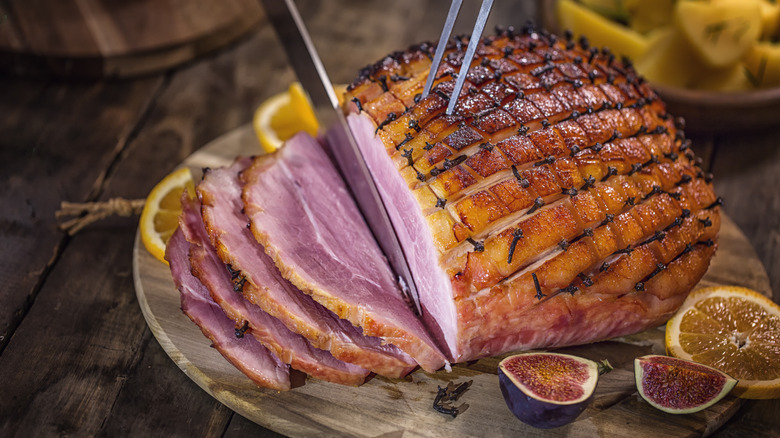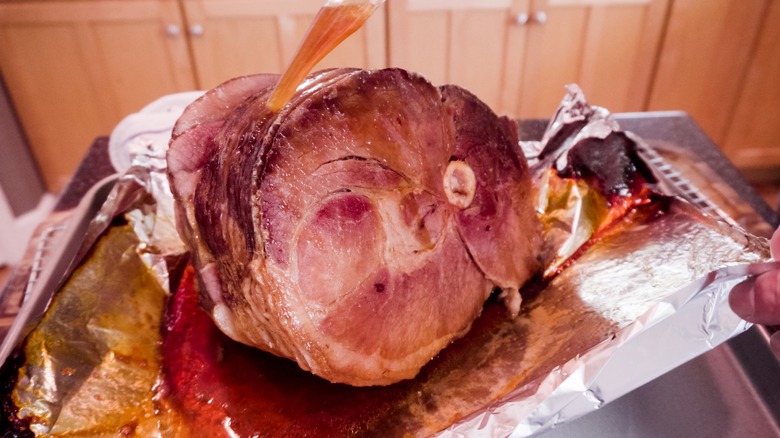The 3-Ingredient Glaze That Makes Boring Ham Sing
Ham, a cut from the pig's leg, can be quite versatile. It comes fresh, cured, or even smoked. However, there are still common mistakes everyone makes when cooking ham that can cause it to taste boring. A sweet glaze is a pivotal element in your ham recipe because it balances the entire dish and neutralizes some of the pork's saltiness.
While holiday hams are commonly accompanied by a honey, maple, or brown sugar glaze, adding pineapple or orange juice into the mix creates a fruit infusion that allows those naturally sweet yet tart citrus flavors to permeate the meat. The vibrant freshness is necessary for some cured varieties of ham with a prominent tasting note of salt. Similarly, incorporating Dijon mustard into your glaze offers a tangy element that complements plain fresh ham's naturally mild flavor while balancing the glaze's sweetness.
For a simple three-ingredient ham glaze that includes those sweet and savory vibes, simply combine ⅓ of a cup of pineapple juice, orange juice, or water with 1½ cups of packed brown sugar and 3 tablespoons of Dijon mustard. In a saucepan over medium heat, slowly stir the mixture until the sugar has dissolved. Then, let the ingredients meld in a simmer for one minute before setting the sauce aside to cool. The sweet and savory combination of glazed ham is nothing new, but the variations of ingredients in the glaze can give this classic dish a fresh twist.
Baste your ham with the glaze multiple times while it cooks
While the liquid in this three-ingredient glaze is interchangeable, fruit juices can be quite acidic, which helps to cut through the meat's richness a bit more than water. If you want to use water, mixing in some apple cider vinegar can enhance the glaze with a tangy kick and take your baked ham to the next level.
While there are many ham recipes you need to try, starting with a simple glaze can help you focus on the proper baking and basting techniques. Understanding how to cook the perfect ham every time begins with the type of ham you purchase. Since many come precooked and ready-to-eat, those that don't will include cooking directions on the package. Ideally, the goal is to heat the ham through while keeping it moist. Basting ham with the glaze multiple times is a great way to add flavor and prevent the meat from drying out while baking.
Start by tightly wrapping your ham in foil and baking it for the majority of the listed cooking time. Then, brush the meat with the glaze and return it to the oven without foil. Continue to brush on the glaze and baste the meat every few minutes, ensuring the glaze isn't burning, until your ham reaches an internal temperature of 145 degrees Fahrenheit. The result will be a glaze-covered ham that's bursting with flavor and worthy of you singing its praises.

